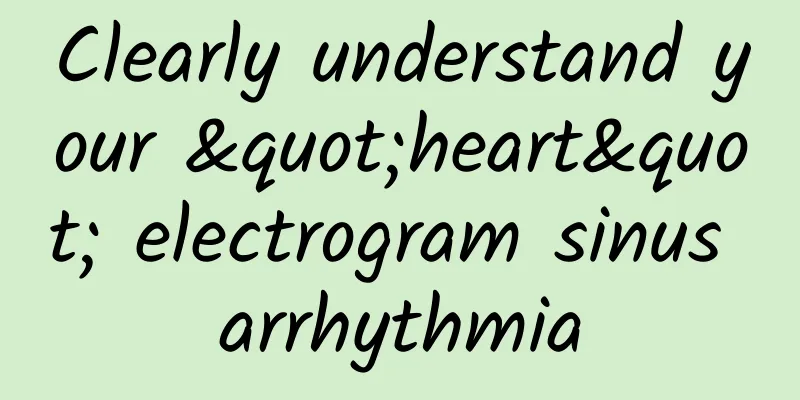Clearly understand your "heart" electrogram sinus arrhythmia

|
Sinus arrhythmia is the most common result in the electrocardiogram report of children's health check-up. Many parents and friends are very worried when they see this "irregularity", thinking that their children have serious heart disease, and they rush to consult a doctor. In fact, "sinus arrhythmia" is a paper tiger. Let's get to know it together today! Let's first look at what sinus arrhythmia looks like. Simply put, the intervals between the "spikes" on the electrocardiogram are different (as shown below), while other electrocardiogram indicators are normal. Sinus arrhythmia is named "sinus", and this sinus refers to: sinoatrial node The sinoatrial node is hidden in our right atrium. Don't underestimate it. It is the commander-in-chief of our human engine, the heart. Under normal circumstances, the sinoatrial node rhythmically sends out commands, and then transmits the signals to the atria and ventricles through a conduction path like an electric wire. Only when everyone cooperates tacitly can a heart beat. As long as the heartbeat is commanded by the sinoatrial node, we call it sinus rhythm. Sinus rhythm is usually regular, but sometimes the commander can miss the beat, which is called sinus arrhythmia. The most common type is respiratory sinus arrhythmia. How does respiratory sinus arrhythmia occur? It turns out that the sinoatrial node also has its immediate superiors, namely the vagus nerve and the sympathetic nerve. ✔When we are quiet, the sinoatrial node is dominated by the vagus nerve, and the tension of the vagus nerve is affected by breathing. When we exhale, the tension increases, which reduces the heart rate; when we inhale, the tension decreases, which speeds up the heart rate. So between our inhalation and exhalation, the heart beats faster and slower; ✔When we exercise or have a fever, the sinoatrial node is dominated by the sympathetic nerves, causing the heart rate to increase throughout the respiratory cycle. The effect of breathing on the heartbeat is not obvious, thus eliminating sinus arrhythmia. So, now everyone knows that the previous panic is all a false alarm! In most cases, sinus arrhythmia is a normal physiological variation. If the child does not have heart pain, chest tightness, palpitations and other discomforts, parents do not need to worry too much, and regular physical examinations and follow-up will be enough~ |
<<: When do walnuts mature? How and when to store walnuts
>>: What is the difference between raw walnuts and cooked walnuts? Are walnuts acidic or alkaline?
Recommend
What are the consequences of ovarian and hysterectomy?
If you suffer from some uterine diseases or ovari...
Women feel the urge to urinate again after just peeing
Going to the toilet, whether it is a large or sma...
Pregnancy vomiting
Dry vomiting during pregnancy is a common symptom...
Why does my stomach become hard in late pregnancy?
In the late stages of pregnancy, it is generally ...
Treatment for female baldness
When it comes to alopecia areata, perhaps many pe...
What to eat when you have menstrual pain
The most painful thing about being a woman is tho...
What are the causes of endocervical mucositis?
Cervical mucositis is a common gynecological dise...
Is ascites in ovarian cancer a late stage?
Ovarian cancer is a malignant tumor that is parti...
Is surgery necessary for third degree cervical erosion?
The incidence rate of gynecological diseases such...
How to eat to lose weight during menstruation? Recommend four dietary therapies
Menstruation is a special stage for women, and di...
Why is my laptop so slow? Is it helpful to reinstall the system if my laptop is so slow?
I don't know if you have noticed that the lap...
What is the concept of photosynthesis? Why did photosynthesis choose the green majority?
Photosynthesis is the process by which producers ...
When is papaya considered ripe? Can you eat green papaya?
Papaya is known as the "longevity fruit"...
Symptoms of gonococcal vulvovaginitis
If a woman's vulva is infected with gonorrhea...









